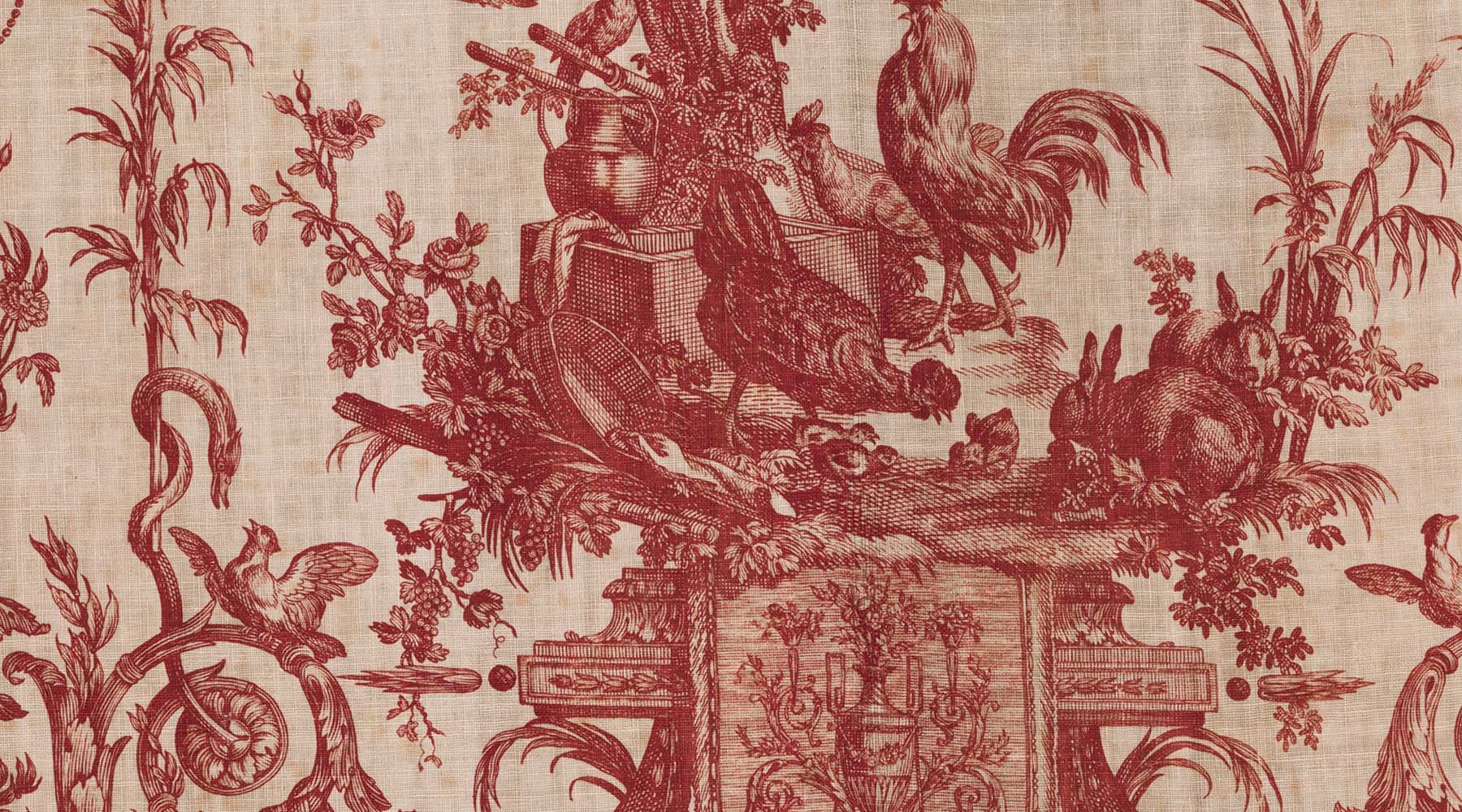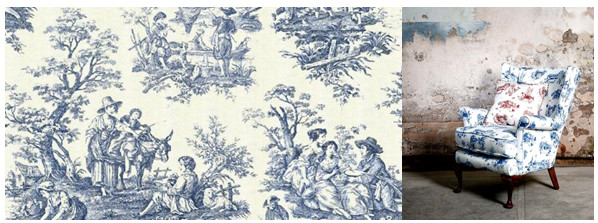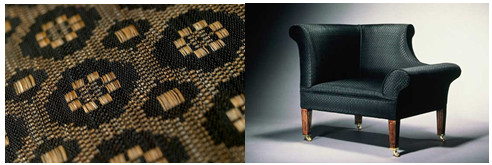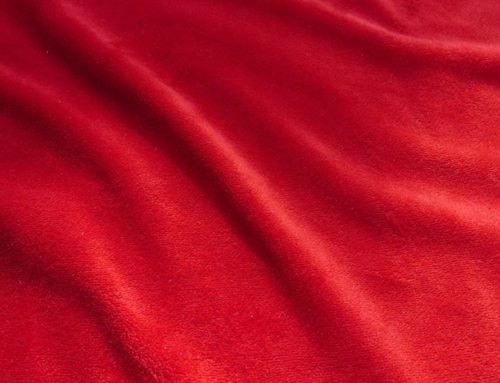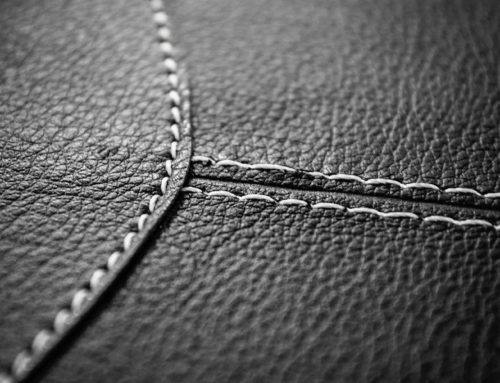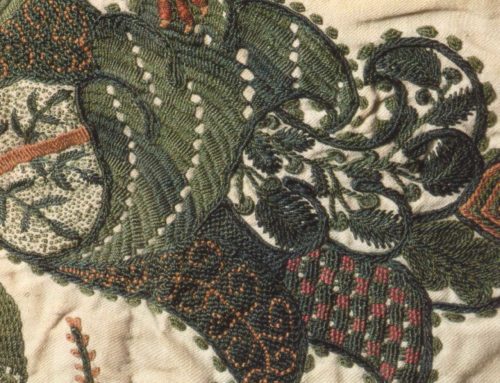We continue our series of blogposts covering the fabrics used in upholstery. Blogpost 8 in the series continues with us covering Chintz, Toile de Jouy and Horsehair fabrics below:
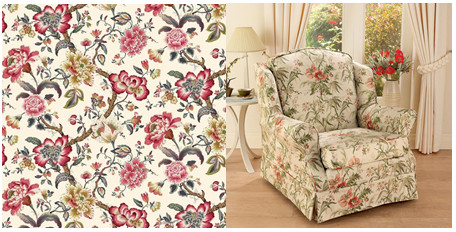 Chintz:
Chintz:
Chintz is a painted, all-cotton calico that originated in India, although nowadays is generally printed in bright colours and patterns, coated with a smooth glaze, and modern versions can be produced with a cotton and polyester blend in a plain weave.
Depending on how the fabric is finished, it can have a soil-and-stain resistant finish, making it a good option for general upholstery as well as soft furnishings. Can be a popular option for loose covers, which dependent on the fabric finish can then become machine washable.
Toile de Jouy:
A European adaptation of chintz (see above); Toile (pronounced “twall”) fabrics are printed in one colour (traditionally navy, cranberry or black) traditionally of rural country French scenes and of people from the 18th and 19th centuries. Nowadays, all sorts of pastoral scenes and colours may be used, and the fabric is still considered ‘toile’.
As with chintz, toile fabric can be produced using cotton, or a variety of cotton and polyester or linen blends in a plain weave. As with chintz, depending on the composition and finish of an individual fabric, it can be soil and stain resistant, making it a good option for both general upholstery and soft furnishings.
Horsehair:
Horsehair fabrics are woven with tail hair from live horses for the weft thread, and either cotton, polyester or silk warps. The unique characteristics of horsehair fabrics are their high durability, stain resistance, silky sheen and easy maintenance, making them ideal for use in sofas and chairs. However, as the weft is horse tail hair, the fabric width is often restricted to a maximum of 70cm, restricting its usage on some pieces of furniture. It can be dyed in any colour, and embroidered if required for specialist projects.
If a 68% horsehair and 32% cotton fabric composition a la John Boyd Textiles fabric, then it’s naturally flame retardant, although it has been noted that some European manufacturers produce fabric that contains 68% horsehair and 32% polyester, which would then require back-coating to meet regulations for furniture use. Some fabrics are sold by suppliers as ‘horsehair’ whilst only having as little as 10% horsehair fibres in the fabric composition, so whilst horsehair fabrics are suited for general upholstery use, the exact composition of any fabric used should be checked carefully in order to adhere to fire regulations.


